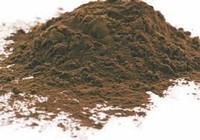Balance, flavour and mouthfeel
The three keys to wine.
Balance, flavour and mouthfeel are much used wine terms. Understanding what they are, and how they relate to one another, is a somewhat complicated but valuable exercise for anyone who enjoys wine. Let’s go!
Balance
 Simply put, a wine’s balance and mouthfeel describes how a finished wine demonstrates several key components of a wine - namely alcohol, tannin, acidity, sugar, the grape and the method used to make the wine (ie the winemaking). A well-balanced wine, each of these components will be ‘at peace‘with the others. Balanced wines are symmetrical and tend to age well.
Simply put, a wine’s balance and mouthfeel describes how a finished wine demonstrates several key components of a wine - namely alcohol, tannin, acidity, sugar, the grape and the method used to make the wine (ie the winemaking). A well-balanced wine, each of these components will be ‘at peace‘with the others. Balanced wines are symmetrical and tend to age well.
But there are two additional sensory components that turn a well-made wine into a must drink wine.
Flavour
 The first component is flavour. Each variety we work with has a flavour-signature. You can taste it by munching grapes in the vineyard. The salty Vermentino, the rosemary herby Sangiovese, the ‘spicy-cherry Barbera, etc. It is the job of the viticulturalist to deliver these ‘typical’ flavours to the winery.
The first component is flavour. Each variety we work with has a flavour-signature. You can taste it by munching grapes in the vineyard. The salty Vermentino, the rosemary herby Sangiovese, the ‘spicy-cherry Barbera, etc. It is the job of the viticulturalist to deliver these ‘typical’ flavours to the winery.
Then it’s up to the winemaker to elevate the fruit, at least into a ‘well-made wine’ but hopefully into “must-” drink’ territory.
Mouthfeel
The mouthfeel of a wine - the sensory perceptions experienced in the mouth when a wine is tasted- is key to achieving the migration. There are six components to the mouthfeel of wine:
Alcohol, Sugar and Water

Alcohol is a measure of how much fructose and glucose is converted in the fermentation process; residual sugar is a measure of how much natural wine sugar remains in the wine after fermentation and water is, well, water!
Length

Think about the after-taste of the wine. In mouthfeel language this is called length. Does it disappear quickly or do flavours linger? Which flavours stick around? Length doesn’t depend on the grape variety, the youth of the wine or the use of oak. They come from the slow release of flavour compounds in the wine. Generally, the ‘longer’ the wine, the more attractive.
This leaves us with two components - tannin and acid. These are tricky to define, but it’s the characteristics of each – and the relationship between them – that optimises the balance and overall attractiveness of a wine.
Tannin
Tannin is a naturally occurring group of compounds (called polyphenols), residing in the skins and seeds of (mostly) red wine grapes. Once the grapes have reached the winery, the way the tannins are extracted has a huge impact on the quality and character of the final wine.

Effective tannin management releases a whole bunch of positive attributes in wine - colour stability, palate structure, producing astringency as a positive mouthfeel in a wine (as opposed to bitterness as a taste), and protect the wine against oxidation.
These are a group of compounds that are vitally important in wine, and more specifically red wines. From this stage on, the key to locking in wine quality is the rate of oxygen flows over the course of treatment.
As different chemical reactions involving oxygen take place, the phenols react to form polymeric species that enhance palate structure and colour stability in the wine., and also work to diminish excessively green, herbaceous characters and reductive aromas in the wine.
Acidity

Acidity is a necessary structural component that balances sweetness, alcohol and the bitterness of tannins. Too much acidity can make a wine seem tart and light, while too little acidity can make a wine taste cloying and clumsy. Well-balanced acidity is the key to making a smooth, drinkable wine.
There are several different types of acid in wines. Malik (think apples) and citric (lemons) acid provide the mouth watering freshness that we very much favour at di Lusso.
Tartaric acid helps a wine age well. And finally, lactic acid (which is formed in the winery via a process called malolalactic acid fermentation) is that softer one that contributes roundness and richness to the mouthfeel. The most common is tartaric acid which as the name suggests is tart, but it is also a powerful antioxidant which helps a wine age, providing texture, ‘chewiness’ and depth.
Robert